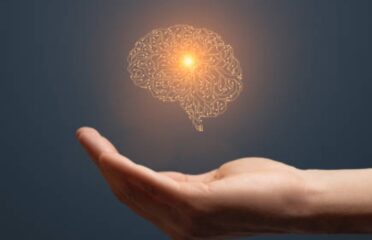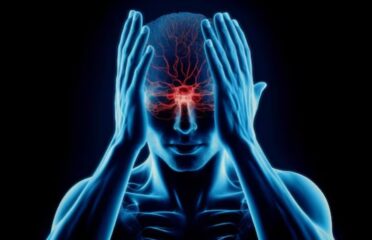Agnosia
Overview

Agnosia is a rare neurological disorder affecting a person's ability to recognize and identify objects, persons, or sounds using one or more senses.
This happens even when their senses are functioning normally. Memory, attention, language problems, or unfamiliarity with the stimuli cannot explain it.
Usually, only one of the sensory modalities is affected. A person with agnosia may not be able to recognize objects visually but can identify them by touch using texture and shape.
It is not the same as anomia, which is a naming disorder where a person cannot name an object despite being able to use other sensory modalities, such as touch and smell.
Symptoms
• Difficulty recognizing faces, including familiar ones, such as friends, family, or oneself.
• Difficulty identifying or naming objects despite clear vision, like being unable to recognize a key, pen, or cup.
• Difficulty understanding spoken words or sounds, despite normal hearing ability, affecting recognition of voices or language comprehension.
• Tactile agnosia: Struggle to identify objects by touch, even though the sense of touch is intact, making it challenging to recognize items through tactile sensation alone.
• Inability to connect sensory input with stored knowledge or memories, leading to difficulty recognizing objects despite perceiving them through different senses.
• Difficulty perceiving spatial relationships, causing navigation challenges or getting lost in familiar places despite no physical impairment.
Causes & Risks
• Brain injury: Agnosia often stems from damage to brain regions like the occipital, temporal, or parietal lobes, crucial for sensory processing.
• Various causes: Stroke, traumatic brain injury
, tumors, infections, or neurodegenerative diseases like Alzheimer's can lead to brain damage triggering agnosia.
• Cerebral lesions: Conditions like tumors, encephalitis, or degenerative diseases affecting the brain can damage structures vital for sensory perception, causing agnosia.
• Vascular events: Strokes or vascular issues leading to reduced blood flow in the brain can damage sensory processing areas, causing agnosia.
• Degenerative diseases: Conditions like Alzheimer's or frontotemporal dementia can cause agnosia as they progress and impact different brain regions.
• Congenital factors: Rarely, agnosia may be present from birth due to brain abnormalities affecting sensory processing structures.
Test & Diagnosis
• Medical evaluation: A healthcare provider assesses the patient's medical history, symptoms, and conducts a neurological examination to evaluate sensory perception and cognitive function.
• Neuropsychological tests: Psychometric assessments evaluate sensory perception, recognition, memory, and language abilities to determine specific deficits and the extent of impairment.
• Sensory tests: Various tests evaluate vision, hearing, touch, and other sensory modalities to assess the patient's ability to perceive and recognize sensory stimuli.
• Brain imaging: MRI or CT scans help identify structural abnormalities or brain damage affecting sensory processing areas.
• Behavioral observations: Observing the patient's daily activities provides insights into the presence and impact of agnosia on their life.
• Functional assessments: Evaluating the patient's functional abilities aids in understanding how agnosia affects their daily functioning.
Treatment
• Compensatory strategies: Individuals may rely on alternative senses or cues like context clues or verbal descriptions to identify objects or situations.
• Rehabilitative therapies: Therapies can help with agnosia-related challenges and improve functional skills.
• Environmental modifications: Adapting the environment by labeling objects, using color-coded cues, and organizing spaces systematically to enhance recognition and reduce confusion.
• Educational support: Agnosic children may need unique teaching methods, assistive tech, and academic accommodations for their social and educational development.
• Counseling and support: Psychological counseling and support groups offer valuable assistance in understanding and coping with the challenges of agnosia for individuals and their families.
• Medications: Medications may be prescribed to manage underlying conditions contributing to agnosia.
Living With
Adapting to challenges: Those with agnosia often learn to adapt by using compensatory strategies. They might rely on other senses or contextual clues to navigate their environment and interact with others. For instance, they may use verbal descriptions, tactile cues, or routines to recognize objects or situations.
Support from others: Support from family, friends, and caregivers is crucial. Understanding and patience from others can greatly assist individuals with agnosia in managing daily tasks and reducing frustration.
Environmental modifications: Adapting the living environment can aid in recognition. Labeling objects, using distinctive cues or textures, organizing spaces systematically, and creating routines can help individuals navigate their surroundings more comfortably.
Education and work: Educational accommodations or workplace adjustments may be necessary for children or adults with agnosia. Tailored learning or work environments, assistive technologies, and specialized teaching methods can support their academic or professional endeavors.
Safety considerations: Individuals with agnosia may face challenges in recognizing potential hazards in their surroundings. Safety measures, such as supervision, ensuring a clutter-free environment, and using assistive devices, can help prevent accidents.
Complications
Complications arising from agnosia can significantly impact an individual's daily life and interactions. Some complications associated with agnosia include:
• Daily task challenges: Agnosia hampers routine activities like recognizing objects or understanding tool usage, making tasks such as cooking or dressing difficult.
• Safety risks: Inability to identify hazards like hot surfaces or sharp objects heightens the risk of accidental injuries due to unnoticed dangers.
• Social interaction difficulties: Trouble recognizing faces or interpreting expressions leads to challenges in socializing, affecting relationships and communication with others.
• Educational struggles: Children with agnosia may face obstacles in learning and comprehending visual information, impacting their academic performance and progress.
• Emotional strain: Frustration and embarrassment stemming from the inability to recognize familiar objects or faces can lead to feelings of isolation and anxiety in social settings.





